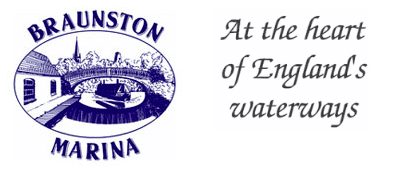“How much will it cost me each year to run a boat?” is a question we are often asked. The answer is far from easy; there are so many variables: length of boat, leisure or residential use, marina or unserviced on-line mooring and its location, how much cruising you will do, etc etc.
Here is a fairly comprehensive list of likely cost items which should be considered if you wish to prepare your own estimate but depending on your own circumstances not all will apply.
Perhaps a very rough estimate might be that each year it could cost you the equivalent of hiring from a quality operator a boat of the same length for 3-4 weeks in peak season. Put this way, any further use is free!
Annual Costs
– Fixed Costs
You will incur these costs even if you do not use your boat.
Finance repayments
If you have taken out a loan to help buy your boat, the annual repayments may be your highest expense. Information can be obtained from Collidge & Partners
Mooring
The next highest cost. Cheaper if unserviced at bottom of a farmer’s field or on a BW long-term mooring, more expensive in a secure, serviced marina berth. Tremendous variations depending on location. Normally higher for residential.
CRT Licence
Based on boat length. Note the large discount if you renew before expiry. More licence information from CRT
Insurance
CRT insist on minimum third party liability cover but you should consider comprehensive boat & contents cover too. No obligation on-line quote available HERE
Community Charge
If applicable which is possible if you live aboard, should be at the lowest band.
Winterisation
If you do not go winter cruising and you want someone to do the winterisation of the engine & waterways for you, there will be a charge.
Depreciation
Unfortunately a boat’s value unavoidably depreciates over time and you should put an amount for this in your annual costs.
TV Licence
If you do not already have one for a house in your name.
– Variable Costs
These will vary depending on how much cruising you do.
Diesel (for propulsion)
An average might be 1 ½ litres per hour.
Heating
Especially with winter use. Coal for a stove, gas or diesel for central heating (if diesel, perhaps ½ litre per hour)
Electricity (shore line)
Likely to be substantial if living aboard.
Cooking
More gas consumption unless your boat is all electric.
Toilet Pump-Out
Unless you have a cassette toilet.
Engine oil changes
Some engines may require an oil & filter change as frequently as every 100 running hours although most will be between 150 to 250 hours.
Engine maintenance
Hopefully not a lot provided you treat it carefully & observe the oil changes but unexpected repairs will be necessary from time to time so you should make a small allowance for this each year.
Separate Generator
If you have one then there will be extra maintenance & fuel costs.
Periodic Costs
There are expenses and occur every few years or so but as some of these can be quite substantial you may wish to ‘annualise’ these and even put the money aside each year into a ‘sinking fund’ so the money is there when you need it.
Hull Blacking
Current practice requires steel hulls to be cleaned and re-blacked at least every 2 years.
Anode Replacement
State of anodes can be inspected when hull is blacked. Rate of wastage can depend on quality of canal water and amount of electrical activity from your boat and others near you at your mooring.
Battery renewal
Cost of replacing a large bank of service batteries will considerably thin your wallet. Much will depend on your use of the boat. Always keep your batteries in good condition. Check electrolyte levels regularly. An advanced alternator controller (“battery management system”) can help prolong their useful life.
Boat Safety Scheme
A new BSS certificate of compliance is required every four years.
Repainting
The external paintwork now lasts nowhere near as long as it did in the bad old days when coach paint had a high lead content. A simple ‘no nonsense’ livery will cost thousands of pounds; a ‘fancy’ job with multiple coach lines, perhaps some scumble and a few roses, castles and some geometric patterns, could double the cost. Even an annualised figure can now be significant.
